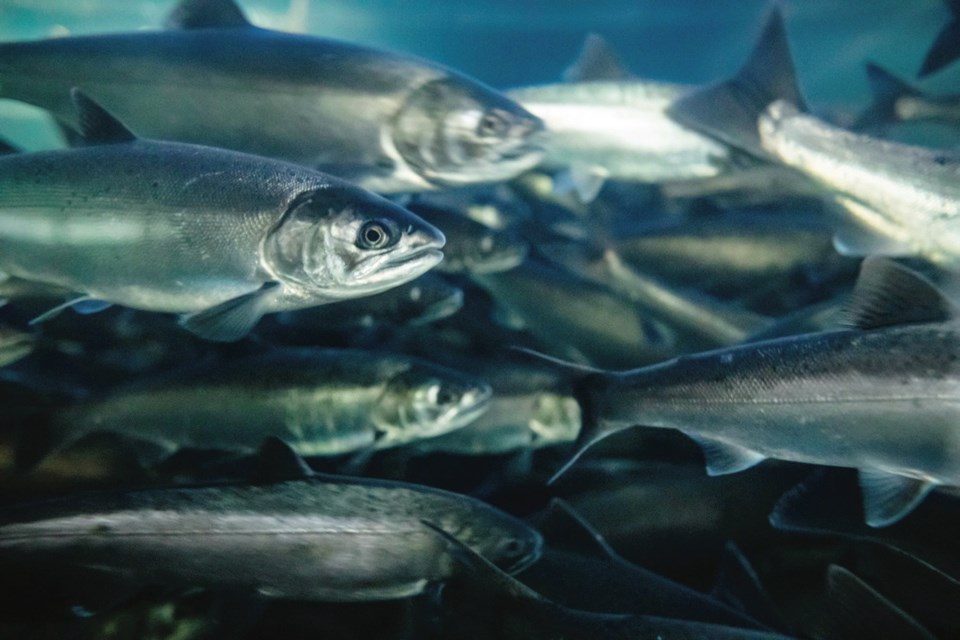Canada’s Pacific salmon industry is withdrawing from Marine Stewardship Council certification rather than risk an audit with a high probability of failure.
MSC set 22 conditions for certification in 2017, most of them aimed at properly assessing the health of wild salmon stocks on the north and central coast and the effect of hatchery fish on wild salmon.
“We were behind on nine of those conditions in last year’s audit and we came to the conclusion that it would be touch and go whether we would pass (this year),” said Christina Burridge, spokesperson for the Canadian Pacific Sustainable Fisheries Society, which holds the MSC certificates.
The move will voluntarily suspend eco-certification of B.C. chum, pink and sockeye, including Fraser River sockeye.
The industry had agreed with Fisheries and Oceans Canada on actions needed to create a plan and then begin assessments, but the program was never properly resourced, she said.
“We have developed plans to achieve the annual milestones set out by MSC, but we have no confidence that [Fisheries and Oceans] can implement them,” she said.
MSC certification is awarded to seafood that can be harvested sustainably from healthy stocks, with minimal impact on the marine environment.
The certifications will expire Nov. 27 and effectively shut out those fisheries from high-end markets, specifically customers who pay top dollar for eco-certified seafood.
B.C. pink, sockeye and chum could also be downgraded by independent eco-certifiers such as Ocean Wise and Seafood Watch, which rates products for consumers with a Green (best choice), Yellow (good alternative), and Red (avoid) system.
Fisheries and Oceans has long struggled with funding, staffing and establishing priorities.
B.C. area managers for Fisheries and Oceans warned that “the regional ability to meet well-established core salmon assessment programs is no longer possible with the allocated funding,” in a letter written last year to the department’s top brass.
“Stock assessment is a top priority, especially when you are authorizing fisheries,” said Burridge. “If you don’t know the status of your stocks, you are working in the dark.”
The industry could attempt to re-enter the certification program next year, but only with three years worth of progress on the requirements set out by MSC, she said. “So, we have some work to do.”
Fisheries Minister Jonathan Wilkinson said he shares the MSC’s concerns about the sustainability of Pacific salmon.
“[The federal government] is looking at every lever we can pull to put the wild salmon stocks on a better path of sustainability,” he said.
The government is still rebuilding Fisheries and Oceans after its capacity to pursue conservation and science was “emasculated” by the previous government, citing a $100-million re-investment “to establish the department’s capability to do its job in an effective way,” he said.
Stock assessment is the foundation of fisheries management, but Fisheries and Oceans’ ability to monitor how many fish return to spawn has been eroded over time, said Jeffery Young, a policy analyst for the David Suzuki Foundation.
“You have to have an idea of how many fish there are before you can know what kind of catch will be sustainable,” he said. “A benefit of the MSC certification is that it requires the fishery to address key gaps, including lack of monitoring, dealing with the risks of hatcheries, and protecting salmon biodiversity.”
The industry can resubmit the fisheries for certification in the next three years, provided that all the conditions are complete and up to date, said MSC program director Jay Lugar.
One year into its certification, the certificate holders were behind on nine conditions, on target for 10, and ahead of schedule on three.
— with a file from Lori Culbert



